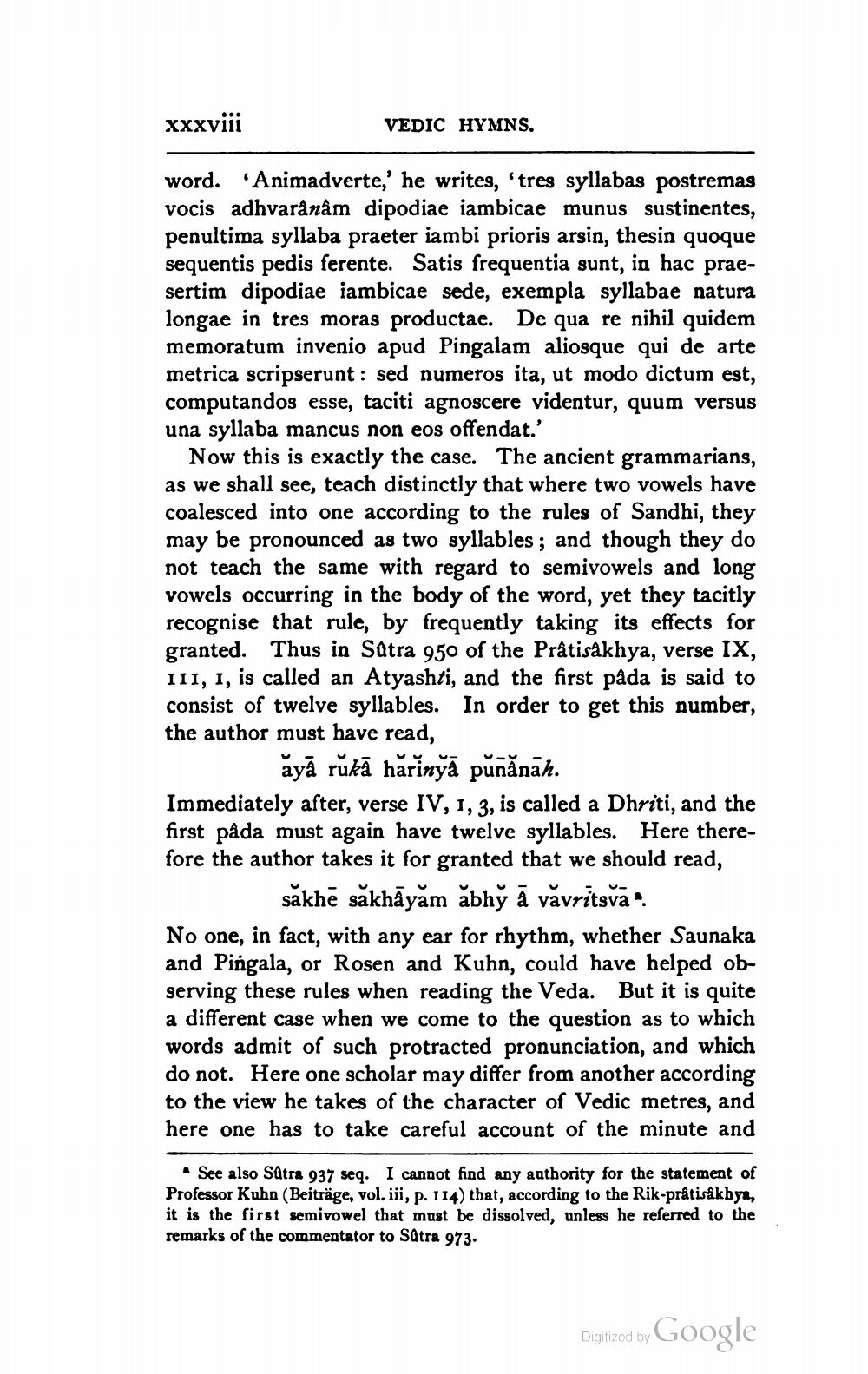________________
xxxviii
VEDIC HYMNS.
word. 'Animadverte,' he writes, 'tres syllabas postremas vocis adhvarânam dipodiae iambicae munus sustinentes, penultima syllaba praeter iambi prioris arsin, thesin quoque sequentis pedis ferente. Satis frequentia sunt, in hac praesertim dipodiae iambicae sede, exempla syllabae natura longae in tres moras productae. De qua re nihil quidem memoratum invenio apud Pingalam aliosque qui de arte metrica scripserunt : sed numeros ita, ut modo dictum est, computandos esse, taciti agnoscere videntur, quum versus una syllaba mancus non eos offendat.'
Now this is exactly the case. The ancient grammarians, as we shall see, teach distinctly that where two vowels have coalesced into one according to the rules of Sandhi, they may be pronounced as two syllables; and though they do not teach the same with regard to semivowels and long vowels occurring in the body of the word, yet they tacitly recognise that rule, by frequently taking its effects for granted. Thus in Satra 950 of the Prátisåkhya, verse IX, 111, 1, is called an Atyashti, and the first pâda is said to consist of twelve syllables. In order to get this number, the author must have read,
àyā rūkā hărinyā punănāh. Immediately after, verse IV, 1, 3, is called a Dhriti, and the first påda must again have twelve syllables. Here therefore the author takes it for granted that we should read,
săkhē såkhāyām ābhý ā vavritsva.. No one, in fact, with any ear for rhythm, whether Saunaka and Pingala, or Rosen and Kuhn, could have helped observing these rules when reading the Veda. But it is quite a different case when we come to the question as to which words admit of such protracted pronunciation, and which do not. Here one scholar may differ from another according to the view he takes of the character of Vedic metres, and here one has to take careful account of the minute and
See also Satra 937 seq. I cannot find any authority for the statement of Professor Kuhn (Beiträge, vol. iii, p. 114) that, according to the Rik-prátisåkhya, it is the first semivowel that must be dissolved, unless he referred to the remarks of the commentator to Satra 973.
Digized by Google




